The first solo exhibition of Walton Ford (Larchmont, 1960) in Italy is being held in Venice . One of the most talented American artists of his generation, Ford is the protagonist of a major site-specific exhibition, for Venice, centered on a new body of works conceived in close relation to the collection of one of the city’s oldest and most accredited institutions: theAteneo Veneto di Scienze, Lettere ed Arti. Lion of God, this is the title of the exhibition, presents a series of large-scale paintings done in watercolor that explore the historical, biological and environmental dimensions of the subjects represented in the Athenaeum’s library collection, in particular the figure of the lion in Tintoretto ’s TheApparition of the Virgin to St. Jerome (circa 1580). The exhibition is spread over two rooms of the Ateneo Veneto, theAula Magna on the ground floor and the Sala Tommaseo, where Tintoretto’s work will be on public display for the duration of the exhibition.
Lion of God is curated by Udo Kittelmann-who collaborated with Ford on his traveling retrospective in Europe entitled Bestiarium (2010-11)-and remains open until Sept. 22, 2024.
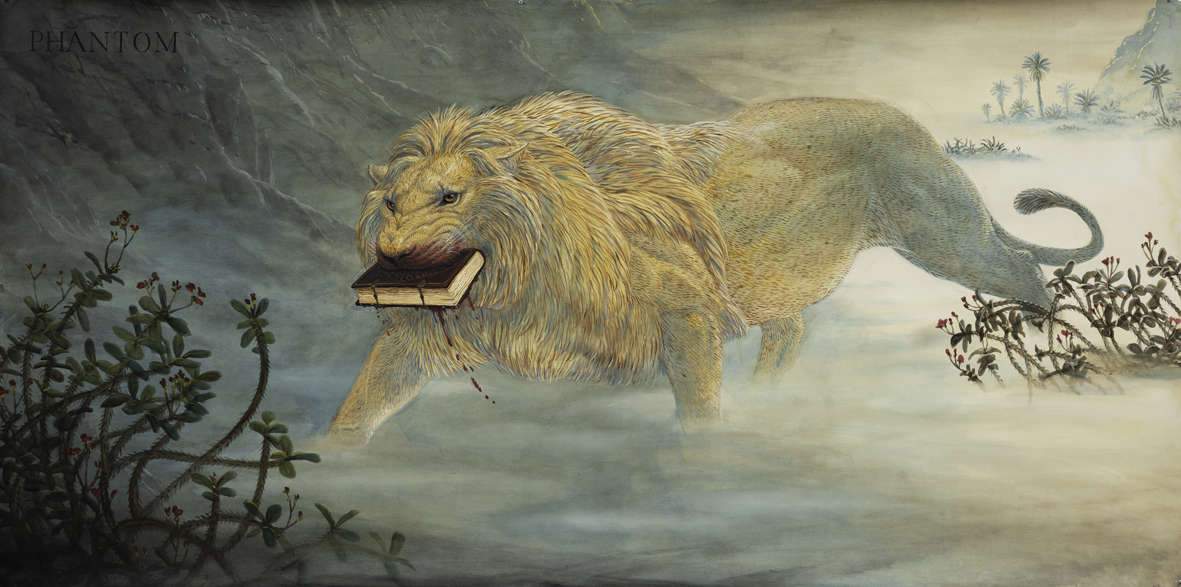
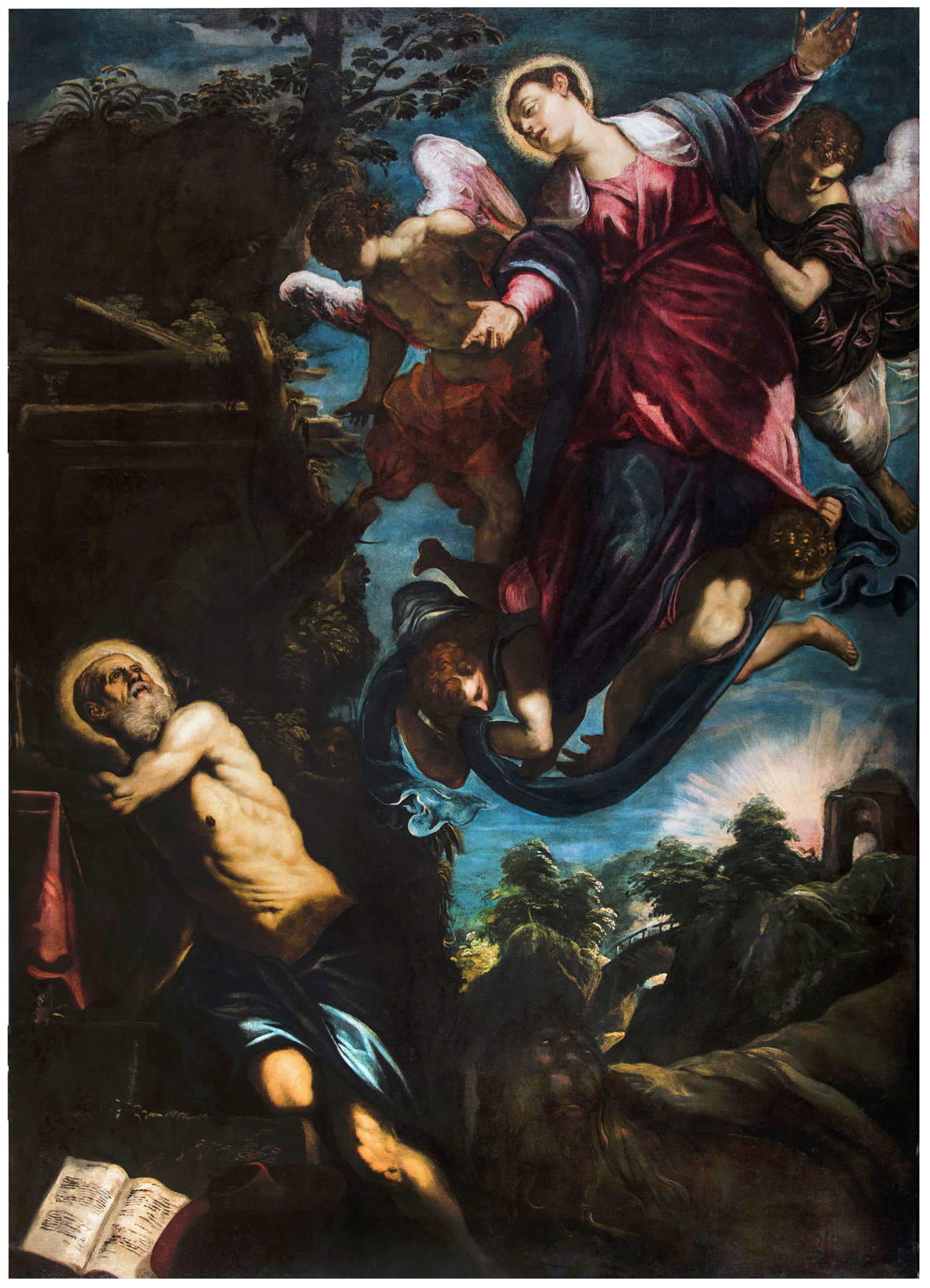
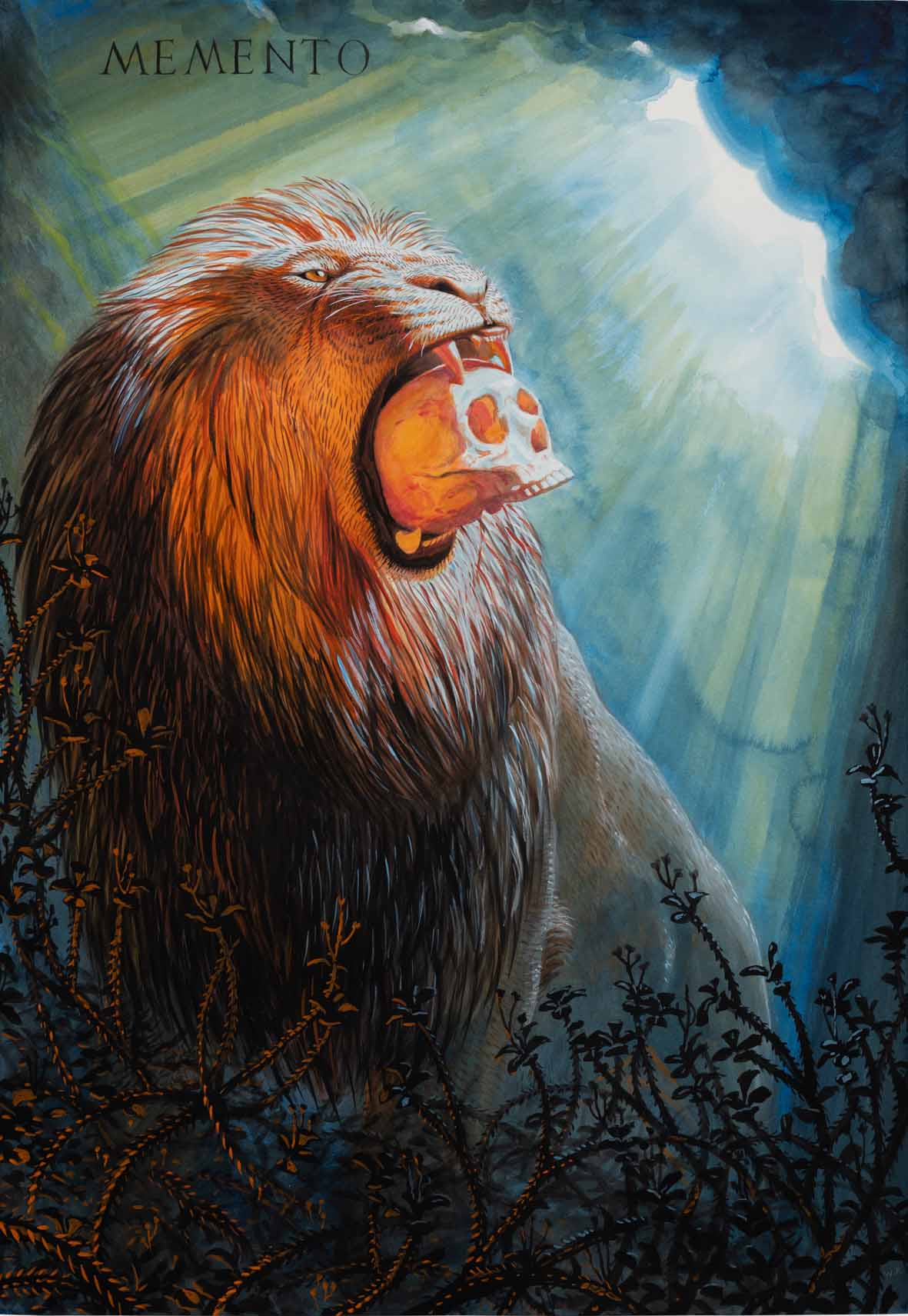
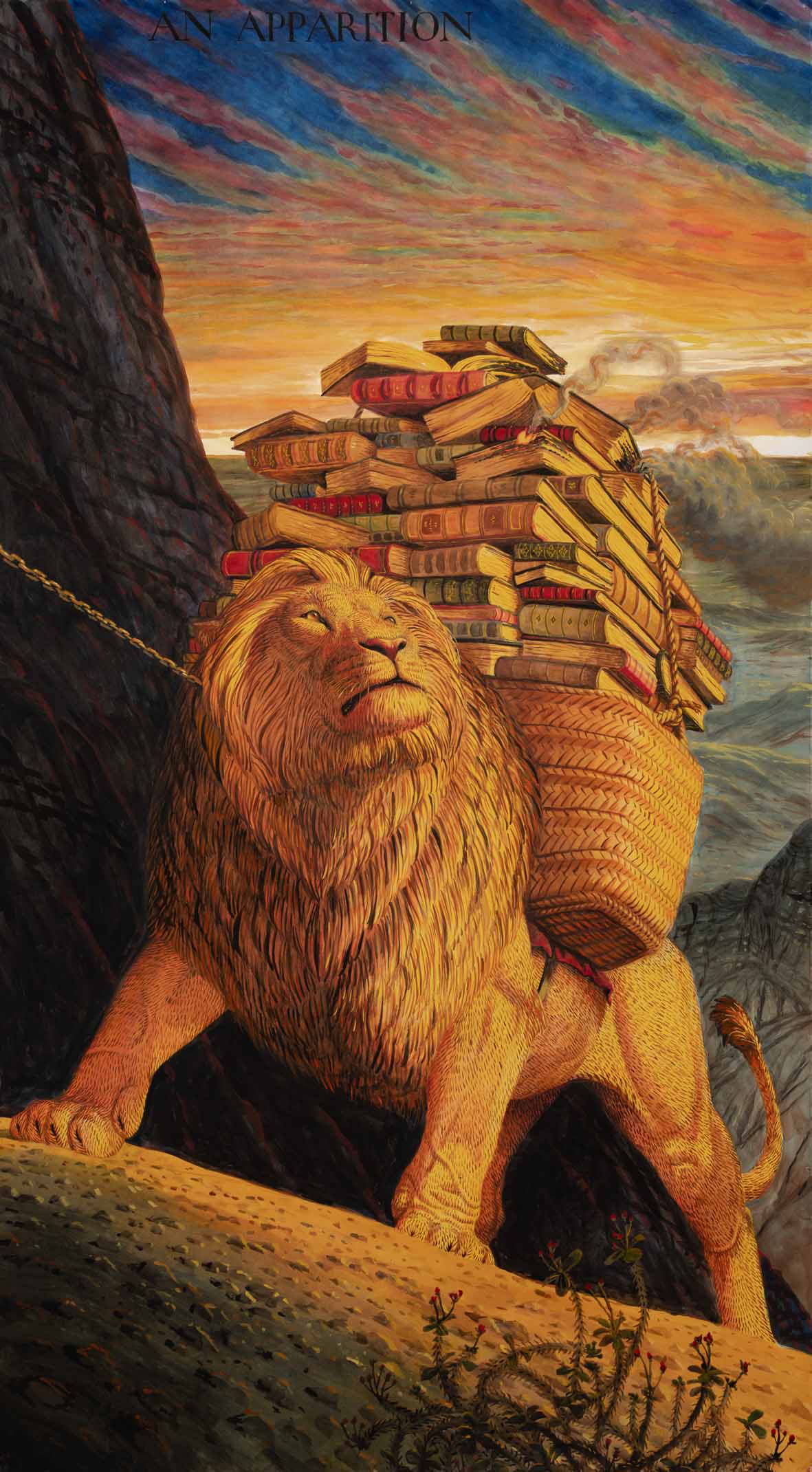
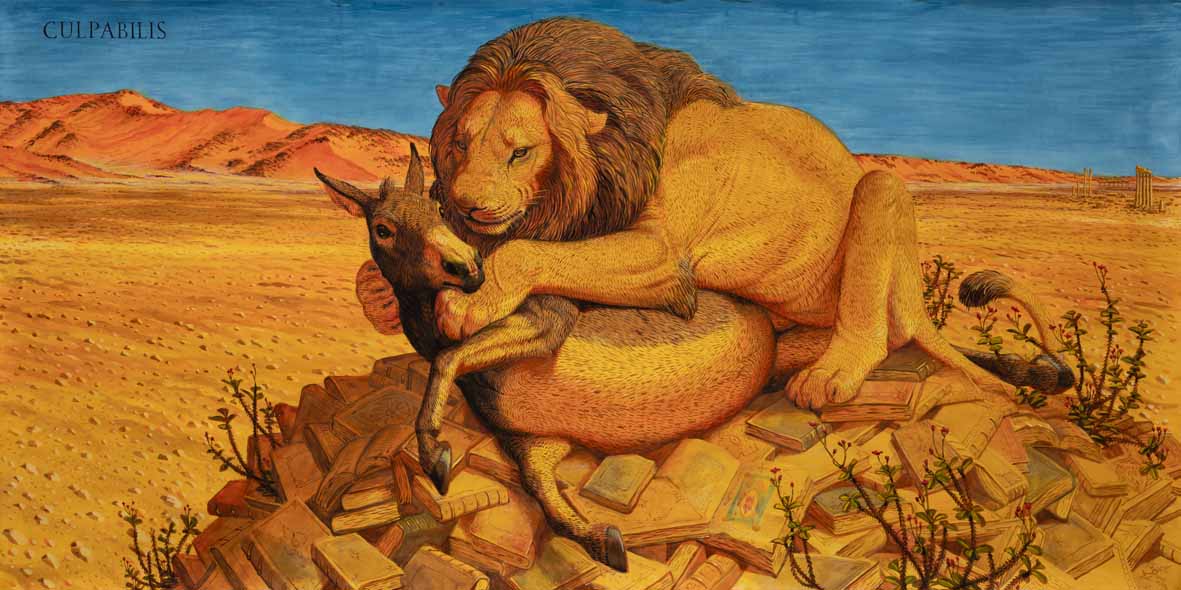
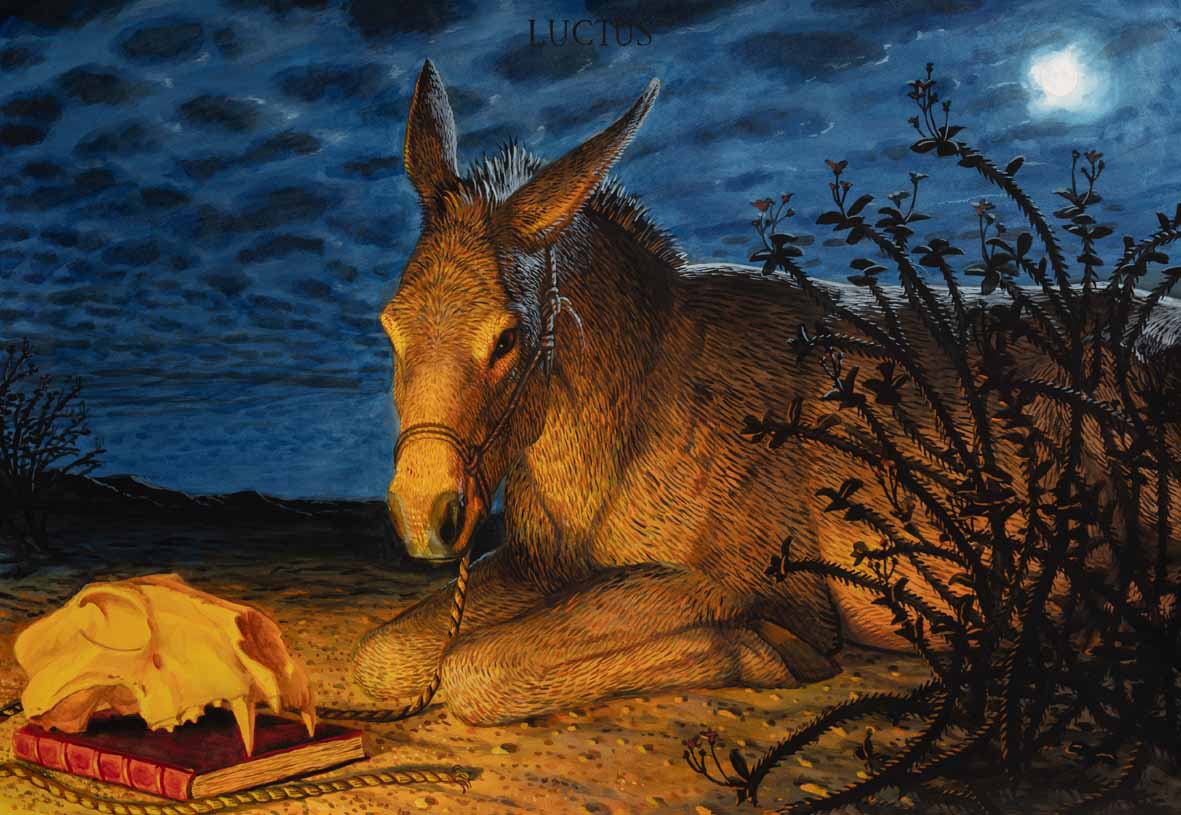
The artist described Tintoretto’s Apparition of the Virgin to Saint Jerome as “an intense discussion of our relationship to the natural world.” Depicting St. Jerome in ecstasy, in the midst of a vision in which the Virgin Mary descends from heaven, the historical painting features the lion that legend describes as St. Jerome’s friend after the latter removes a thorn from his paw. The unlikely connection between the two characters is described in detail in The Golden Legend, a text widely circulated in Europe in the late Middle Ages that also served as a reference for the American artist. Tintoretto deploys great skill in storytelling, also shared by Ford, and paints his lion by placing him in shadow, at the bottom of the work. One of Ford’s new paintings, nearly ten feet in length, will reverse the Venetian painter’s framing to foreground the animal’s experience.
Ford’s ongoing philosophical inquiry into the ways in which we interact with and distance ourselves from animal species invokes one of the most pressing issues of our time: the terrible ecological crisis we are experiencing. Udo Kittelmann explains the project this way, “In his search for analogies between past and present, Walton Ford’s paintings superimpose intricate representations of natural history with a contemporary critical reading, including quotations from literary sources from centuries past, all rendered in the style of painting by the great masters. In his works, which can be seen as a satire of political oppression and environmental exploitation, he questions the concept of ’always new’ and ’always better.’ At the same time, Ford has always raised questions about the multiple expectations and established rules of contemporary aesthetics. To be precise, his paintings are a tale about the arrogance of human nature. Yesterday, Today and Tomorrow.”
Ford’s work subverts the conventions associated with human attempts to categorize and interpret the natural world, drawing on sketches, naturalistic dioramas, zoological records, mythology, fairy tales and art history. While alluding to studies in the field of natural sciences in the 19th century, Ford’s poetics is broad in its references, urging the viewer to identify these fragmentary clues as keys to revealing the historical or fictional event depicted in the work. The artist’s works are anatomically precise due to close observation of taxidermied specimens in museum collections, and vividly project the lives, experiences, observations and hidden histories of their human and animal subjects.
Concurrently with the Venetian exhibition, the Morgan Library & Museum in New York City is hosting (April 12 through October 6, 2024) Walton Ford: Birds and Beasts of the Studio, an exhibition of the artist’s drawings, organized by Isabelle Dervaux, curator and head of Acquavella’s modern and contemporary drawings department.
Lion of God is organized by Kasmin Gallery, New York and will be shown at the Ateneo Veneto in Venice. Since 1997, Kasmin has presented 11 solo exhibitions of Ford’s work, including Barbary in 2018, a body of work exploring the fate of the Berber lion of North Africa.
For all information, you can visit the official website of the Veneto Athenaeum.
Pictured: Walton Ford, Phantom (2023)
 |
| Venice, at Ateneo Veneto the first solo exhibition in Italy by Walton Ford |
Warning: the translation into English of the original Italian article was created using automatic tools. We undertake to review all articles, but we do not guarantee the total absence of inaccuracies in the translation due to the program. You can find the original by clicking on the ITA button. If you find any mistake,please contact us.